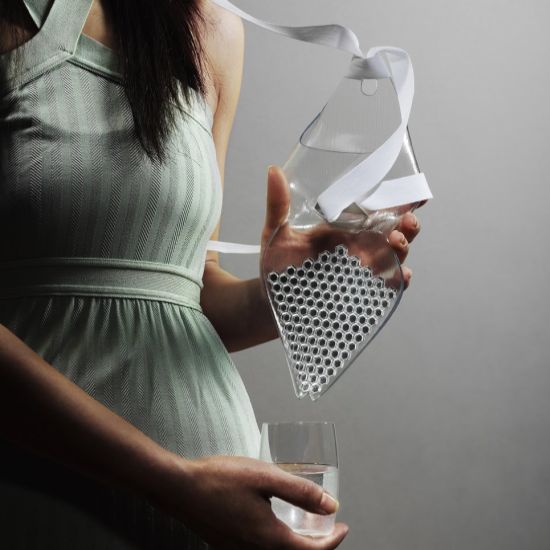
The UN estimates that over a billion people in the world lack access to safe drinking water and millions of people die worldwide each year as a result of diseases that are waterborne. Moreover, the rising levels of pollution in tap water makes most people opt for bottled water, which gives rise to plastic waste. Even though there has been advances to reduce plastic waste such as a bottleless office water cooler, Brita filters, and better water filtration systems, but it still has not been enough to curb pollution. Industrial designers have tried to solve these problems with ingenious water purification systems that are easy to use and also help in reducing plastic waste. Here is a list of 12 such water purification systems that are designed to help the environment and society:
• H2Go Water Purifier:
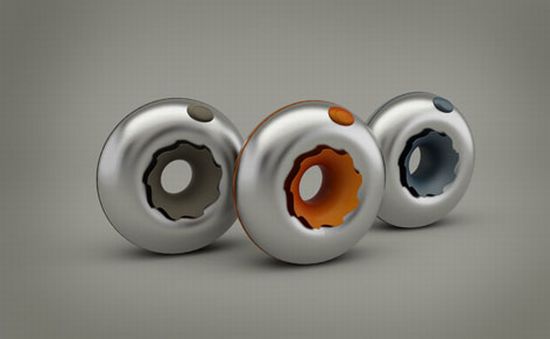
Designed by Kiba Design, the H2Go water purifier could be a boon for both the developed and the developing nations. The H2Go water purifier emphasizes the fun donut form of the bottle as an invitation to carry a water bottle rather than purchasing bottled water. The purifier uses silver-impregnated activated carbon filters and a micro-filtration membrane. The filter is passed though water using the serrated disc, leaving behind clean and potable water.
• Aqualris:
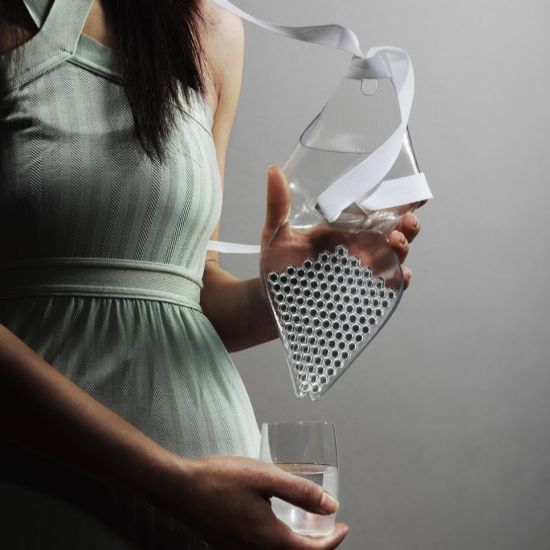
The Aqualris is a non-electric water purifier by industrial designer Talia Radford. The purifier works by modulating the sun’s rays to UVC frequency, which then purifies water. The device carries a series of lenses to perform the task and as water passes under these lenses each molecule is hit by a beam of UV rays, which kills all bacteria that might be present in water. The Aqualris water purifier can purify over 300ml of water at a time and carries a slot for removing the mechanical filtering system as well.
• H2O Water Cycle:

The H2O Water Cycle is the brainchild of designer Diego Andres Martinez, which has been designed to remove contaminants from water, by using two processes in a single package. The first process, called Sodis, is a sun-powered process, which makes use of UV-A rays to remove pathogens. In the second process, water is boiled to produce steam. During vaporization, all solid contaminants are removed and vapor is condensed to produce potable water. Finally, the active carbon filter is able to eliminate all odors found in contaminated water.
• Slingshot Water Purifier:
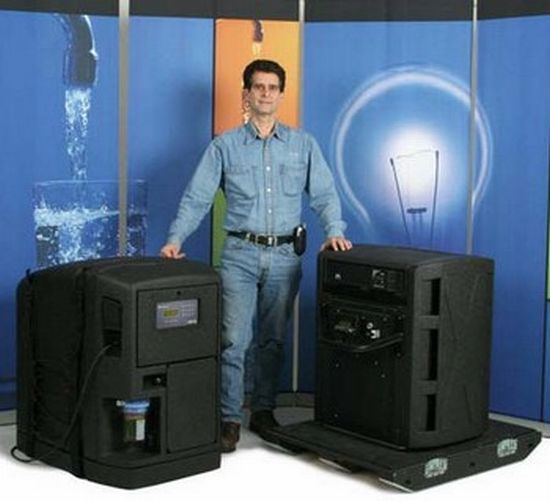
The Slingshot Water Purifier by Dean Kamen uses the power of alternatives and a Stirling engine based power generator that works on cow dung. The $1500 water purifier will produce 1000 liters of water a day, while the $3,700 generator produces around 1 kW, which is enough to deliver light to a small village. With most villages in third world countries still in need of both electricity and clean drinking water, these gadgets are very practical.
• Solaqua:
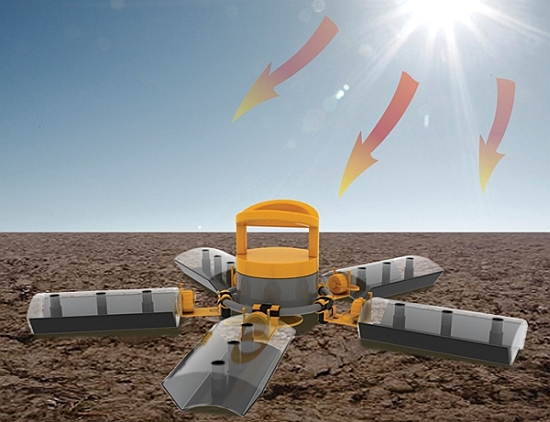
The Solaqua by Jason Lam is a solar-powered water purifier that can provide up to 10 liters of safe drinking water. The Solaqua utilizes ultraviolet and infrared rays from the sun to eliminate pathogens present in contaminated water. Non-potable water is initially passed through a sari cloth to improve the efficiency of solar water disinfection. Then a five-tap funnel fills five specially designed bottles to obtain 10 liters of water. These five bottles are then spread on the ground to allow maximum sun exposure. The surface of these bottles is black to absorb more heat, while the interior of these bottles is reflective to reflect UV rays within the bottle.
• Aquaduct:

The Aquaduct allows for water transportation on a fairly large scale and simultaneously allows you to purify it with pedal-power. The bike won top honors at the 2008 Innovate or Die contest. Created by IDEO, this is truly a boon for those still unable to quench their thirst with clean and pollution-free water.
• Watercone:
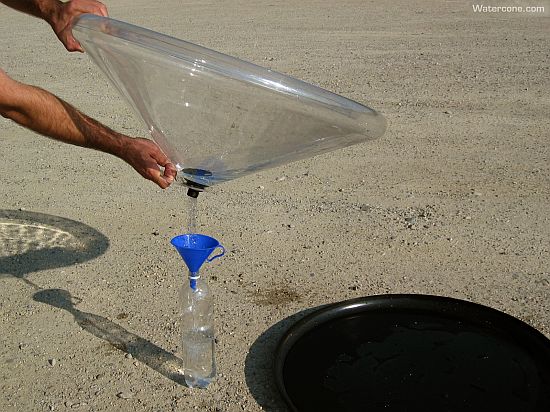
The Watercone water purifier is essentially an evaporator. The user can pour up to 1.7 liters of dirty water in the black pan and cover it with the transparent cone. Keeping the device in direct sunlight heats up water and turns it in into vapor. As water evaporates, it leaves behind the impurities in the pan and clean water condenses on the surface of the cone. After a few hours the cone can be emptied into a clean water bottle or a glass.
• Aquaovo’s Ovopur:
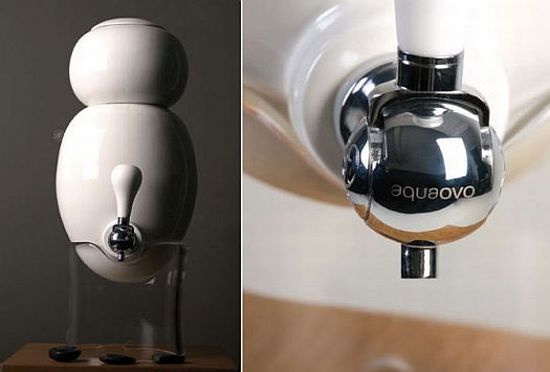
The Ovopur from Aquaovo is an eco friendly water purifier that uses the ancient method of sedimentation to get its process done. The Ovopur is made of porcelain, glass and metal and it looks more like a miniature round, potbellied human form than a water purifier. The Ovopur’s specialty lies in its very innovative use of gravity to filter out harmful toxins and bacteria instead of electricity that conventional water purifiers use.
• STER UV:

The STER UV by industrial designer Olivia Blechschmidt has been designed for fast, simple, compact and intuitive water purification to ensure a clean and healthy kitchen environment. The design features a thin and lightweight UV light stir along with an induction charger. The stir can purify water directly in a glass or pitcher and doesn’t require replacement batteries.
• Rewave:
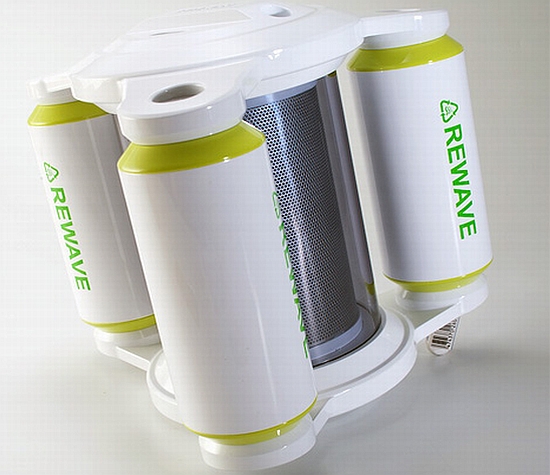
The Rewave is a portable water desalinating device that uses wave energy to provide potable water. Envisioned by Yu-Hong Chen, the device helps you convert seawater into potable water, making it ideal for use in coastal areas. The device floats on water and harnesses the energy from the waves to power itself. The device carries an aperture at its bottom and allows seawater to get through the motor area. After the process is complete, fresh water accumulates at the top and comes out via a pipe.
• Zuvo:

The Zuvo Water Filter uses a patented five-step cleansing process that includes ozonation, UV exposure, photo-oxidation, activated carbon filtration with lead removal and post filtration UV treatment. The end result of all these processes is clean water that is as fit for drinking as packaged water.
• Lifestraw:

The Lifestraw is a 25cm long, 29 mm diameter, plastic pipe that costs about $2 and aims to provide potable water to millions of people who perish each year because they simply don’t have clean water to drink. The device has a lifetime of about 700 liters of water, which is approximately one year of water consumption for one person, and effectively removes most of the microorganisms responsible for causing waterborne diseases.




